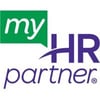Far too many businesses still operate under the outdated assumption they only need to recruit employees when they have job openings.
In a hyper-competitive environment, you need to find good people long before you need them.
Building a strong, sustainable workforce requires proactive recruiting practices that attract candidates year-round by promoting your company to prospective employees as you would promote it to customers or clients. If your company doesn’t have an ongoing recruiting practice in place, probably you are already behind the competition.
At the same time, the solution goes beyond finding new places to post advertisements. The recruiting industry is awash with new services that promise to link candidates and companies. Anyone can post a job ad.
If you sit back and passively wait for applicants to come in, you stand a real chance of missing out on the best ones.
Successful businesses realize the solution lies in thinking differently. You need to dedicate resources to attract top talent, in addition to placing ads for jobs.
Attracting applicants needs to be a yearlong process, even if you plan to hire only a few people annually. Here are some measures to take toward growing your pool of quality candidates.
Post your anticipated job openings – not just current ones – on your website
Once published online, “spider sites” that pick-up job postings from other websites, such as indeed.com, will share your job ads at no cost to you. You can start finding people now for future needs. And make sure your employees know that you’re looking for their future colleagues so they can refer people.
Use an applicant tracking system
These programs receive and catalog resumes for open and upcoming positions. They help you build, manage, track and search your collection of candidates. Once you’ve used an ATS, you’ll never go back to spreadsheets and folders.
Go beyond ad placement
Despite your best efforts, you can’t always count on great candidates to find you. (Some of the best aren’t even looking.) You need to find them – most often on the internet. Develop strategies for learning where they are and the best ways to approach them, or work with a firm that can help you. It takes time.
Build a great workforce
Great employees are shopping for you as much as you’re shopping for them. Make sure your management team is building an organization that meets the expectations of today’s candidates. That starts with the leadership itself. Great people want to work for other great people.
Brand your workplace
“Employer branding” is focused on attracting and retaining employees as if they were customers. Most website career pages are bland and uninspiring. (When was the last time you changed yours?) Make sure your career pages are inviting and reflective of your culture. Let prospective employees hear from your existing ones. Use social media, video and other techniques – just like you would promote products or services.
Know and manage your reputation
Thanks to the internet, there are few secrets. Most people check you out before applying. They visit Google reviews and sites such as Glassdoor to get a view into your company, along with ratings, comments, pictures and more. Encourage your good employees to contribute to the internet conversation to present a real and balanced view.
Offer good wages and benefits
Salary and benefits offerings are more visible than ever before. (Check out Glassdoor, if you want an example.) If you want to be considered by the most desirable candidates, you must be competitive. A great culture, stellar work environment and inspiring leadership will only put your company ahead if you are meeting the market’s expectations.
The bottom line
Most employees today no longer are thankful just to have a job. They are more likely to change employers to chase new opportunities. Meanwhile, companies that are growing and expanding will need more quality people.
Employers who embrace the idea of continual recruiting while creating and maintaining a desirable workplace will invariably come out ahead. Those who do not will be saddled with second-tier employees or be unprepared to take advantage of growth opportunities.
Which will you be?



